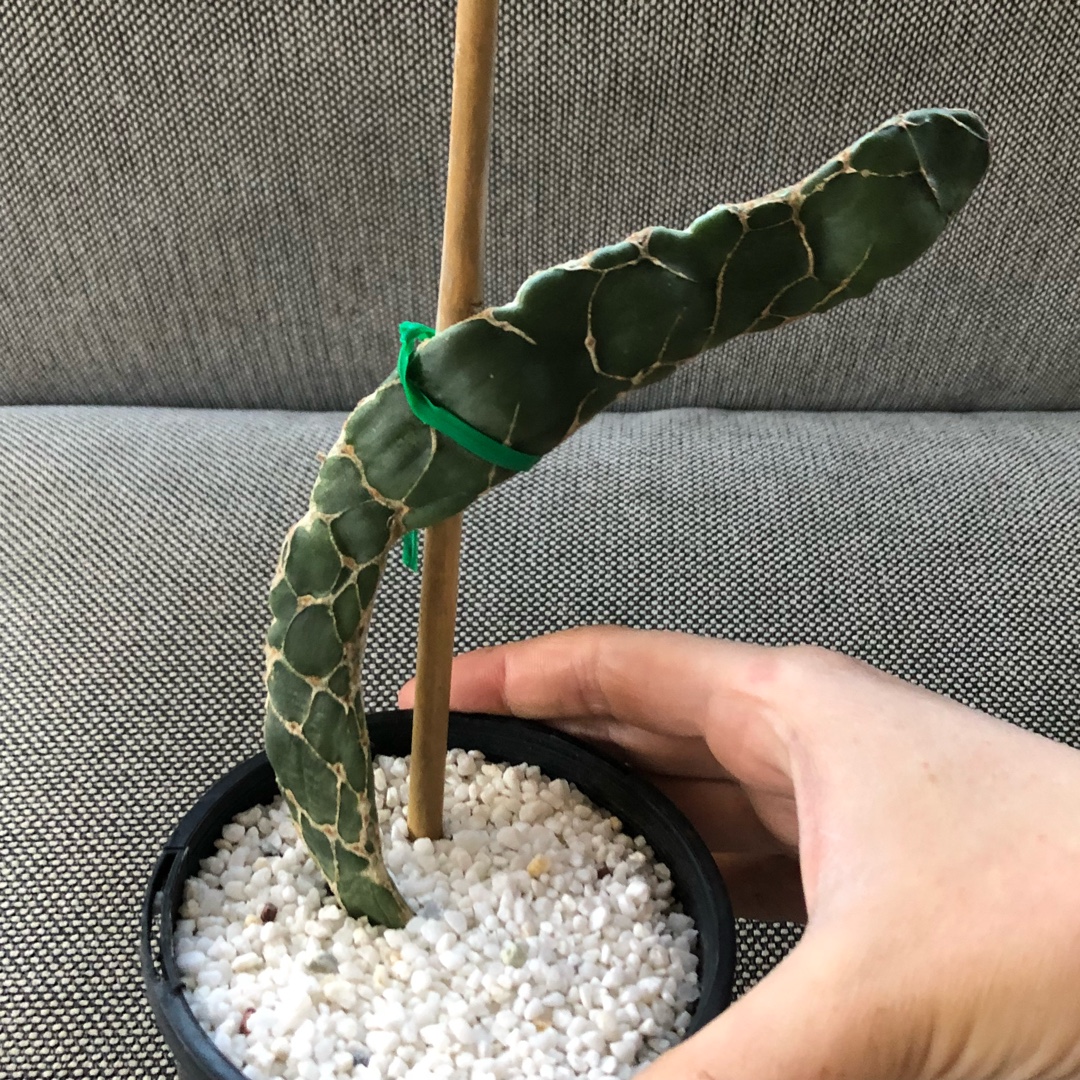
Opuntia dellenii 'Reticulata'
Snake Skin Cactus
Criss cross line markings make this rather strange looking monstrous form resemble a snake. They are relatively easy to culture, but spreads irregularly all around and are quite sensitive to over watering (root rot prone). Require full sun to partial shade with a well-drained soil mix. The plants are watered and allowed to dry thoroughly before watering again. During the winter months, the plants enjoy a cold place where the temperature is dropped to 5/10° C, but hardy to -5° C for short periods of time if very dry. During this period water only enough to keep the pads from shrivelling.
Contributed by @yougrowgirl
-
Full sun to partial shade
-
Very little water
-
A little frost hardy: 32F (0°C)
-
Light and free draining
Common name
Snake Skin Cactus
Latin name
Opuntia dellenii 'Reticulata'
type
Flowering plant
family
Cactaceae
ph
5.0 - 7.5 Acid - Neutral
Plant & bloom calendar
-
Best time to plant
full grown dimensions
 0.30 M
0.50 M
0.30 M
0.50 M
Opuntia dellenii 'Reticulata'
Criss cross line markings make this rather strange looking monstrous form resemble a snake. They are relatively easy to culture, but spreads irregularly all around and are quite sensitive to over watering (root rot prone). Require full sun to partial shade with a well-drained soil mix. The plants are watered and allowed to dry thoroughly before watering again. During the winter months, the plants enjoy a cold place where the temperature is dropped to 5/10° C, but hardy to -5° C for short periods of time if very dry. During this period water only enough to keep the pads from shrivelling.
Propogation by cuttings
From Early Spring TO Early Spring
Angel Wings cactus can be propagated from seeds or from pads. Growing Angel Wings from pad is comparatively easy than seeds. To facilitate the rooting it is preferable to wait until the cuts are perfectly healed (about 1 – 2 week) before planting. Tuck them an inch deep on the ground or in containers. The rooting take place in a short time, usually in a month. Save the rooting pad from afternoon sun and water it when top one inch of soil seems dry.
Planting
From Early Spring TO Early Spring
Growing Angel Wings cactus on a sunny location allows the plant to thrive and fruit. Angel Wings cactus is a tropical plant so it loves warm exposure. However, it can withstand temperatures down to 0C but in areas with harsh winters it is good to plant it on a sheltered spot, near a wall or tall tree to protect it from cold drafts and fluctuation in temperature. If you’re living in a cooler climate, growing Angel Wings cactus in a container is the better option for you as it can only be grown on the ground where winter temperature remains above freezing.








